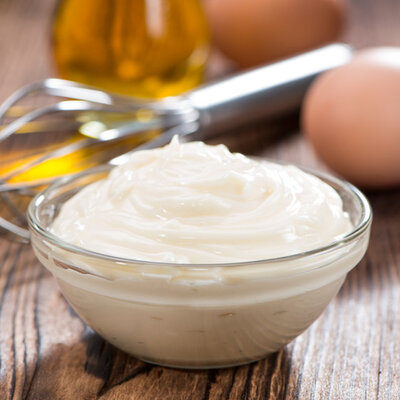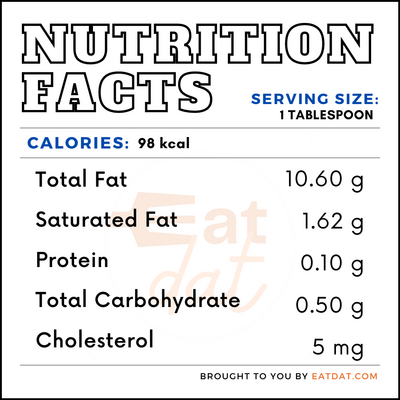
Mayonnaise
What is Mayonnaise?
Mayonnaise is a condiment made with oil, egg yolk, and lemon juice or vinegar. It is a type of sauce or dressing often used as a side for several dishes, such as salads, French fries, sandwiches, and burgers. This condiment has an off-white or pale yellow color with a thick, creamy texture.
The top 10 most popular brands on the market are:
- Blue Plate
- Hellmann’s
- Spectrum
- Duke’s
- Heinz
- Kewpie
- Kraft
- Miracle Whip
- Sir Kensington’s
- Trader Joe’s
Origin of mayonnaise
While there is no clear date or place of origin for mayonnaise, there are stories which speculate its history. One story credits its invention to the Duke de Richelieu, Armand de Vignerot du Plessis, in 1756 during the siege of Port Mahon. A general during the Seven Years’ War, the Duke’s chef discovered that Port Mahon, an island of Minorca, had no cream for a sauce. He invented the egg and oil sauce in a pinch and called it mahonnaise after the island.
However, it is possible that the chef learned the recipe from the residents of Minorca. Another story has it that the sauce originated in France. It may have been called bayonnaise after the city of Bayonne. Also, the name may have come from ‘manier’, old French for yolk. Some sources believe that it may even be of Spanish origin, citing its similarity to aioli.
Nutrition
1 tablespoon of this condiment offers the following nutritional value:

It is a high-fat food that can easily lead to health issues, such as obesity and cardiovascular diseases if consumed too often. However, in moderate quantities, it can be beneficial because it is rich in polyunsaturated fatty acids. Furthermore, as this condiment contains eggs, it is important to follow food safety recommendations to avoid foodborne illnesses, such as salmonella when consuming it.
Commercial production
Commercially prepared mayonnaise must have at least 65 percent vegetable oil. The egg yolk is used as an emulsifier and constitutes between 4 to 8 percent of the sauce. To prepare this condiment, oil is put in a tank along with other ingredients and mixed. Then, the mixture is added to an emulsifying tank until it becomes viscous. After that, the resulting mixture is pasteurized by heating, and then cooled before being filled into sterilized containers.
The highest consumers of this condiment are Russia, Lithuania, Ukraine, Belarus, Belgium, Estonia, Latvia, Chile, the Netherlands, Poland, and Japan. Commercial mayonnaise have a shelf life of up to six months. Homemade varieties must be prepared from fresh eggs and can be stored in the fridge for up to four days.
Mayonnaise recipes
This condiment can be used in both sweet and savory dishes. Here are some popular recipes:
- Mayonnaise Sandwich
- Mayonnaise Cookies
- Chocolate Mayonnaise Cake
- Fruit Salad
- Waldorf Salad
- Egg Salad
- Creamy Potato Salad
- Garlic & Soy Sauce Fried Rice
- Mayonnaise Rolls
- Japanese Crab Corn Salad
- Okonomiyaki
- Chacarero
- Aji Verde Sauce
- Dijon Crusted Fish
- Russian Salad
- Shuba Salad
FDA regulations
Mayonnaise is classified as a food dressing by the FDA. It is defined as the emulsified semisolid food prepared from vegetable oils, acidifying ingredients, and egg yolk-containing ingredients. Furthermore, it must contain at least 65 percent of vegetable oil.
References
David Merritt Johns, A Brief History of Mayonnaise, Slate, https://slate.com/culture/2013/12/mayonnaise-history-was-it-invented-by-the-french-or-the-spanish.html
Matt Baumber, Mayonnaise Production, Quadro Liquids, https://www.quadroliquids.com/blog/mayonnaise-production
Olsson, Viktoria et al. “The Effect of Emulsion Intensity on Selected Sensory and Instrumental Texture Properties of Full-Fat Mayonnaise.” Foods (Basel, Switzerland) vol. 7,1 9. 17 Jan. 2018, doi:10.3390/foods7010009, https://www.ncbi.nlm.nih.gov/pmc/articles/PMC5789272/
